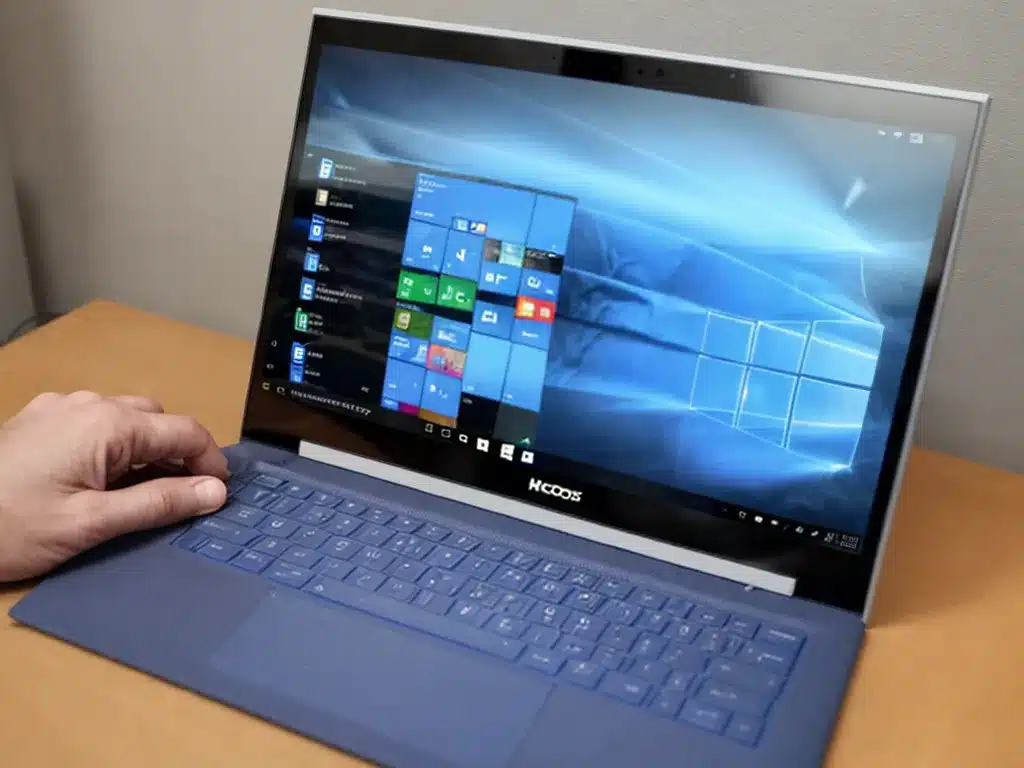Having internet connectivity issues in Windows 10 can be frustrating. However, there are several things you can try to diagnose and fix the problem. Here is a comprehensive guide on how to troubleshoot and resolve internet connectivity problems in Windows 10.
Check Your Network Adapter
The first thing to check is whether your network adapter is working properly.
- Open the Start Menu and search for Device Manager.
- Expand the Network adapters section.
- Look for any adapters with a yellow exclamation mark, which indicates a driver issue.
- Right-click the adapter and select Update driver. This will reinstall the latest driver for the adapter.
If updating the driver does not fix the issue, you may need to roll back the driver, uninstall and reinstall the adapter, or replace the network adapter if it is faulty.
Check Your Network Connections
Verify that your network connections are set up correctly.
- Go to Settings > Network & Internet > Status.
- Under Change your network settings, check if you are connected to the correct network.
- Click Network and Sharing Center and under Connections:, ensure the proper network adapter is selected.
If you are connected to the wrong network, choose the correct one from the list of available connections.
Reset the Network Stack
Resetting the network stack will clear any network-related errors and refresh your network components.
- Open an elevated Command Prompt.
-
Run the commands:
netsh winsock reset
netsh int ip reset -
Restart your computer.
This will reset the network settings like TCP/IP, DNS cache, ARP cache, etc.
Renew Your IP Address
If your network adapter has an invalid IP address, you may lose internet access. Renewing your IP address will assign a new one.
- Open an elevated Command Prompt.
- Type
ipconfig /renewand press Enter to renew your IP address.
If the problem persists, you can also try flushing your DNS resolver cache:
- In the Command Prompt, run
ipconfig /flushdns.
Disable VPN Connections
If you are connected to a VPN, it could interfere with your default network connection.
- Go to Settings > Network & Internet > Status > VPN.
- Turn off any active VPNs to disconnect them.
Try accessing the internet without any VPN enabled.
Turn Off Firewall and Security Software
Firewall settings or security programs can sometimes block internet access. Temporarily disabling them is worth trying.
- Go to Settings > Update & Security > Windows Security.
- Under Firewall & network protection, turn off Windows Defender Firewall.
Also turn off any third party antivirus or firewall software. Check if internet connectivity is restored. Turn them back on after troubleshooting.
Use Auto Troubleshooter
Windows 10 has a built-in network troubleshooter that can automatically detect and fix problems.
- Go to Settings > Update & Security > Troubleshoot.
- Run the Internet Connections troubleshooter.
- Restart your computer after it completes.
This will diagnose your network adapter, connections, DNS server etc. and attempt to fix any issues found.
Reset Your Network Settings
As a last resort, you can reset your network components to their original state.
- Go to Settings > Network & Internet > Status > Network reset.
- Select Reset now. This will reset network adapters, TCP/IP settings, VPNs, etc.
- Restart your PC.
After resetting network components, you will have to reconfigure your network adapter and connections.
By following these troubleshooting steps, you should be able to identify and fix any problems with your internet connectivity in Windows 10. Reach out to your ISP if the issues persist after trying all of the above solutions.













